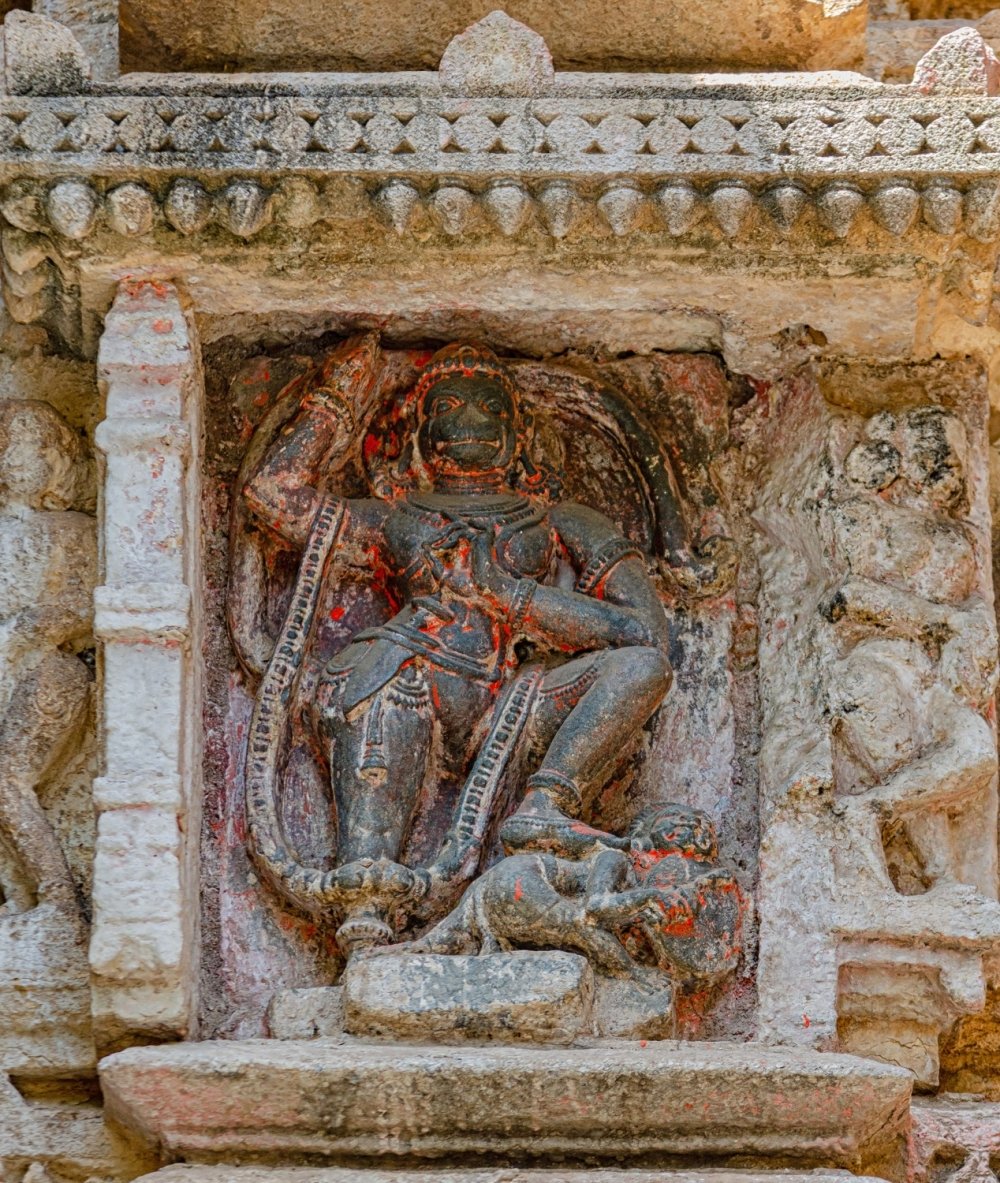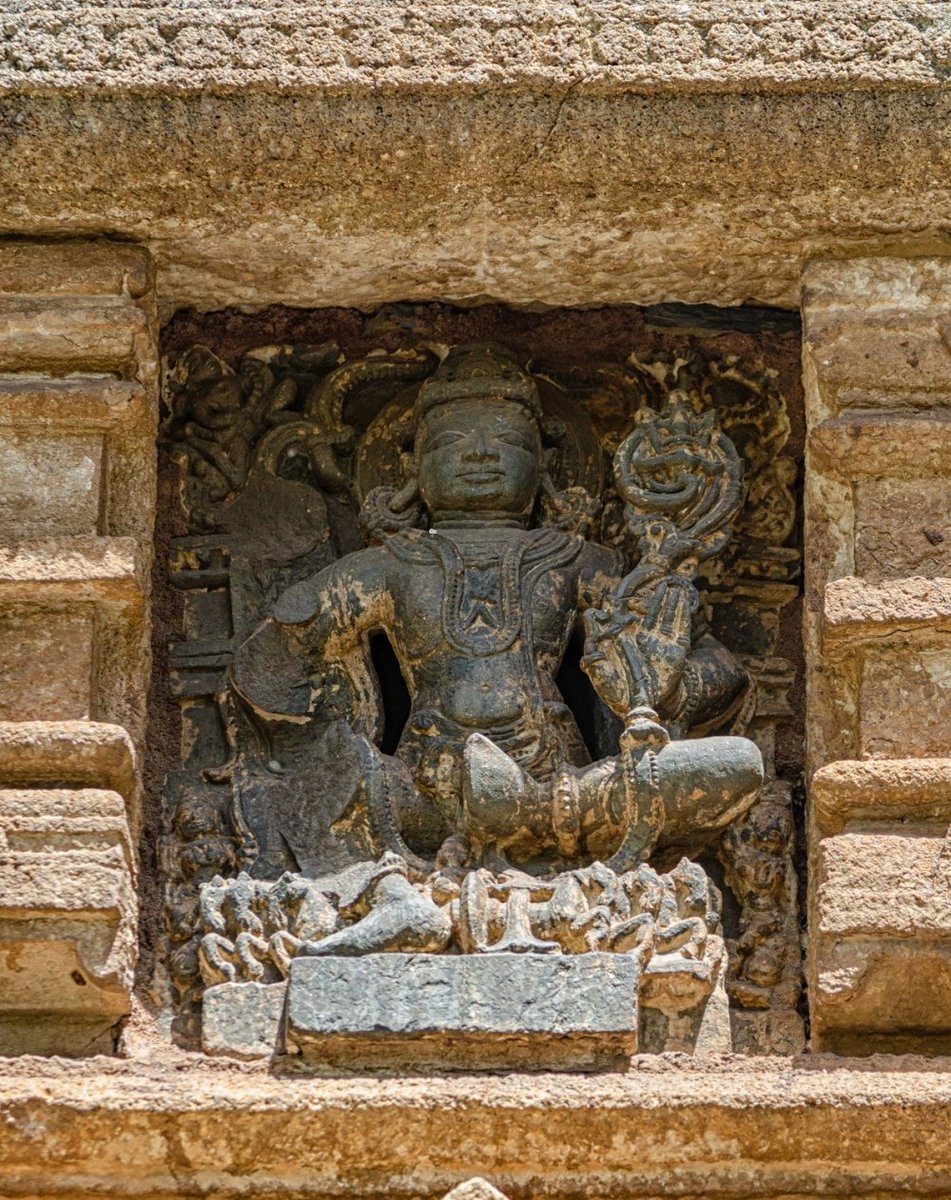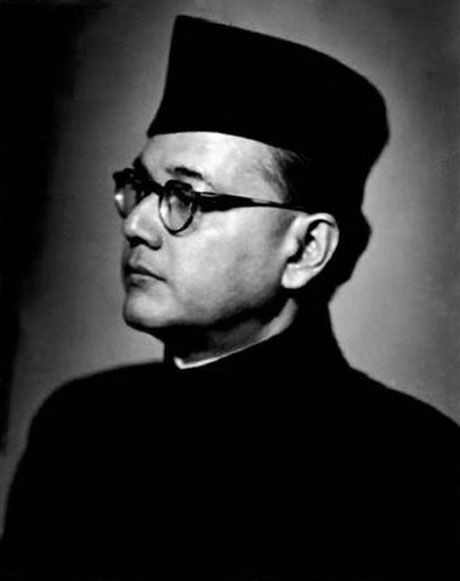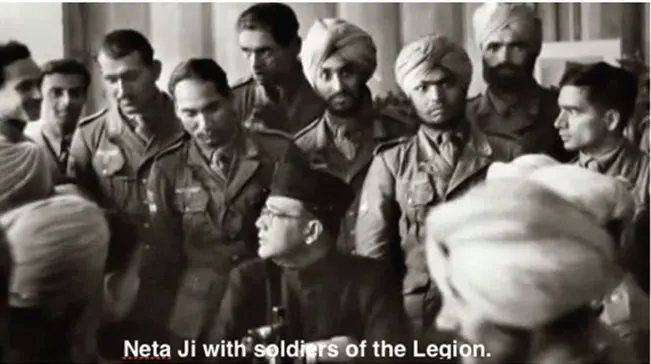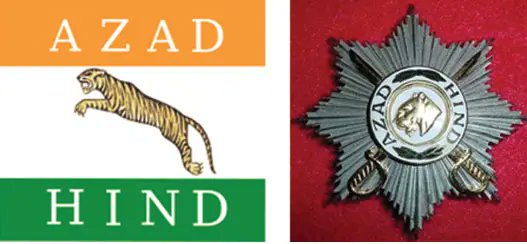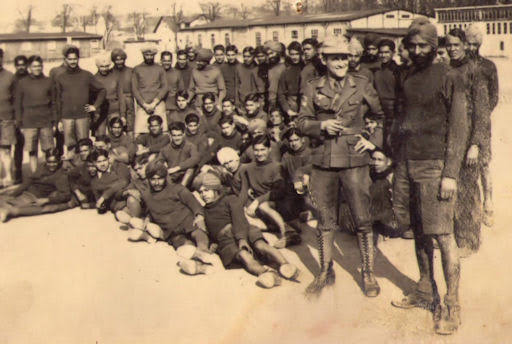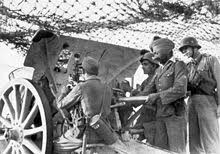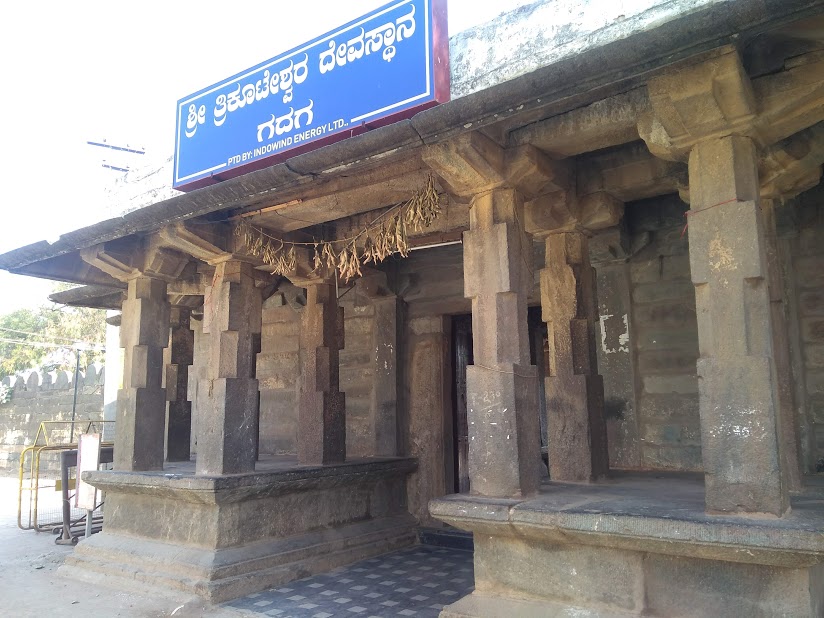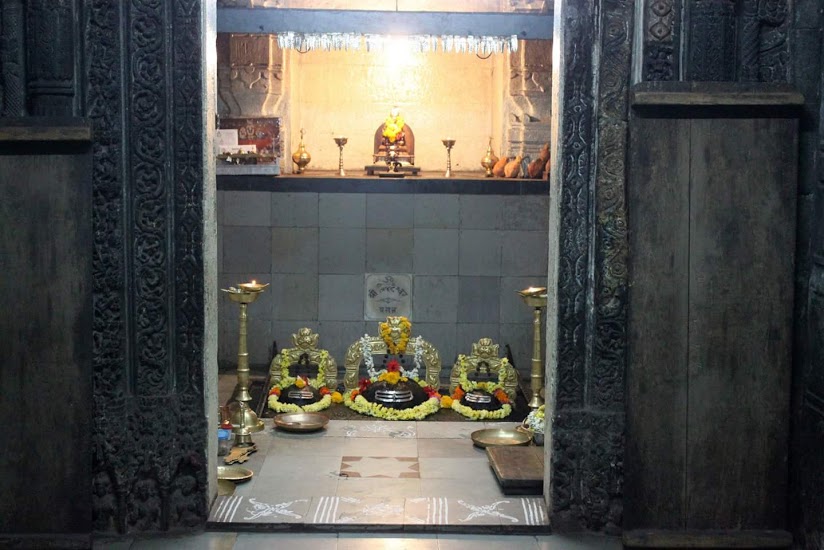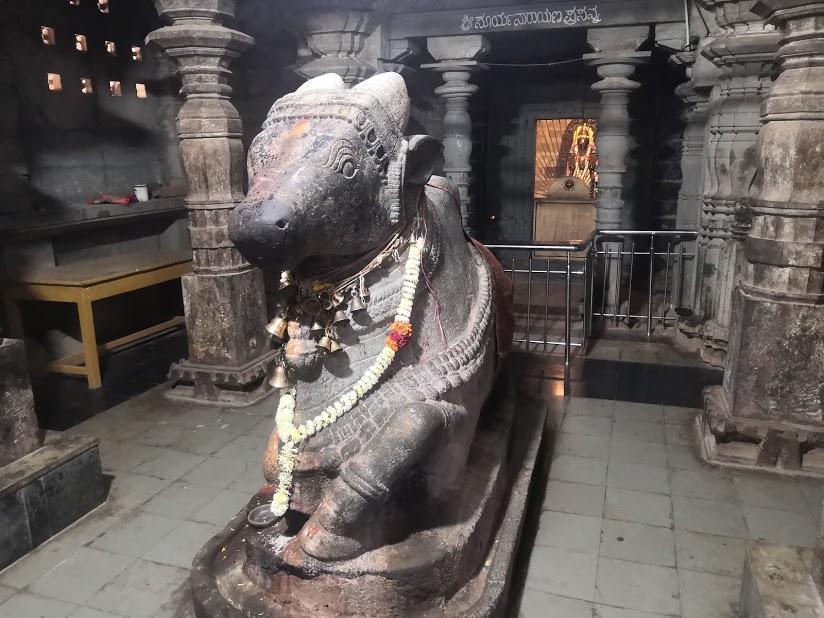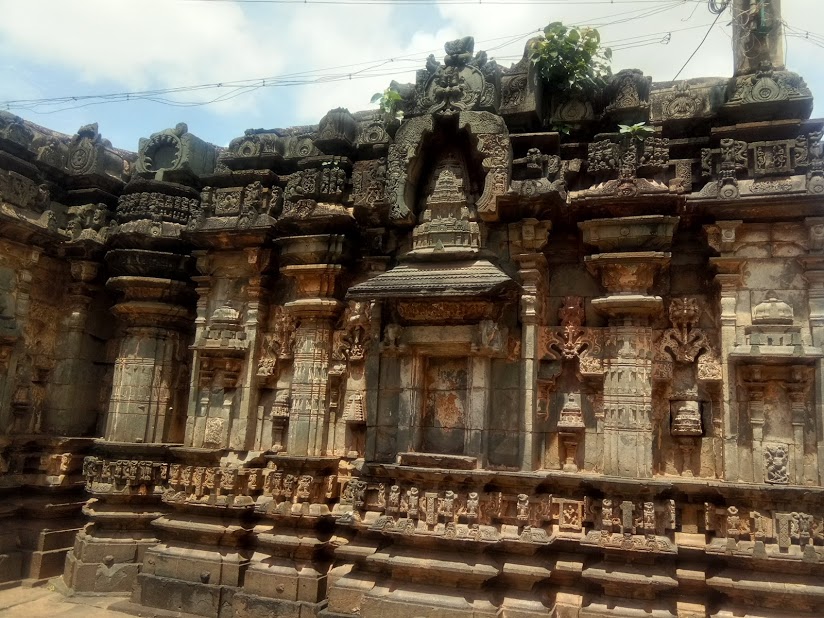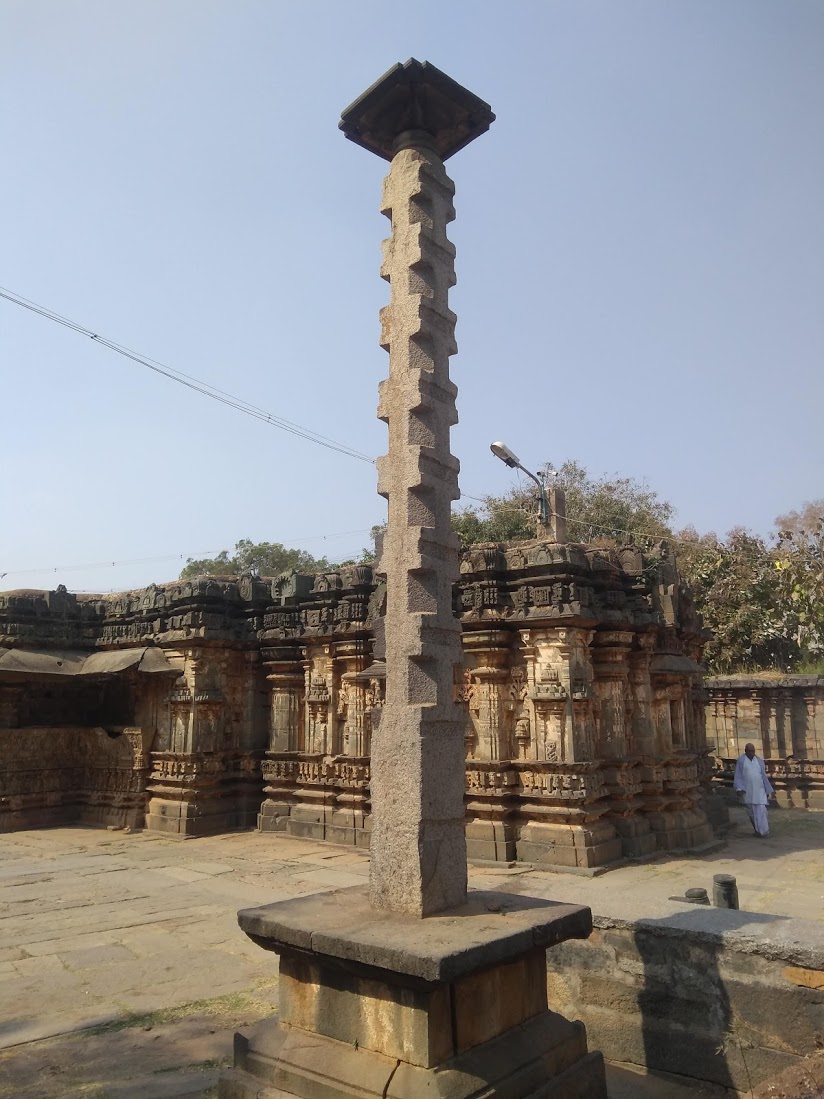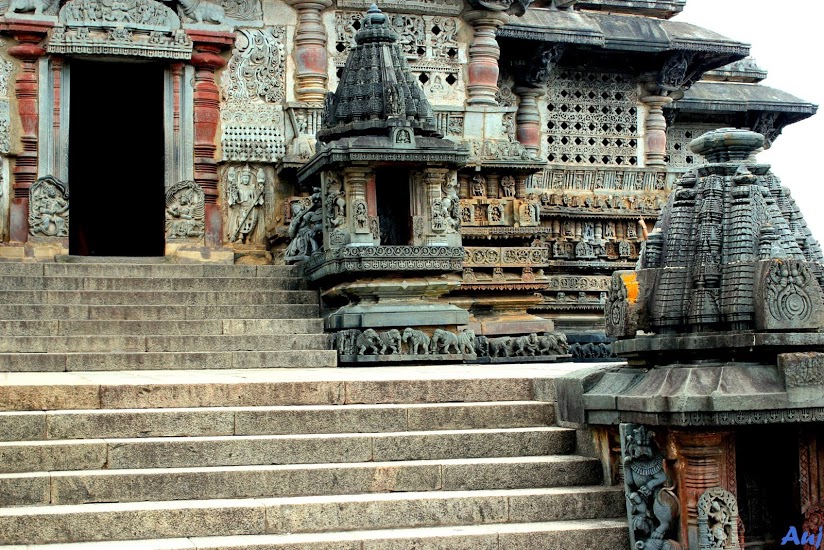
Bhoramdeo Temple, Chhattisgarh
The Bhoramdeo temple complex is situated in the Kabirdham district of Chhattisgarh. The complex consists of Bhoramdeo temple, a dilapidated structure, site museum and some dislodged sculptures.
(Thread)



The Bhoramdeo temple complex is situated in the Kabirdham district of Chhattisgarh. The complex consists of Bhoramdeo temple, a dilapidated structure, site museum and some dislodged sculptures.
(Thread)




The main structure of Bhoramdeo temple is dated to the 11-12th ce during the reign of Naga king Gopaladev. The sculpture of a male with an inscription (a yogi) on its pedestal inside the mandapa, records the name of Gopaladev and dates back to 1098 AD.(1) 

The Bhoramdeo temple structure manifests a saptaratha (seven offsets on its walls) plan. It is east facing, constituting a mandapa with entry porches on the south and north which form kakshasanas (seat backs), antarala (antechamber) and a garbhagriha (sanctum).(2) 

The chief sculptural setup of the temple unfolds on the bhadra (central) niches of the antarala and the garbhagriha.(3)
The interior of the temple lacks carving. The pillars and outside are the only carved surfaces.The garbhagriha of the temple enshrines a Shivaling.(4) 

On elevation, the 5 course vedibandha (podium) rises into a saptaratha (exterior wall of the garbhagriha), which culminates in to a shekhari style shikhara (superstructure) with urusringas (miniature spiral projections) and a chandrasala (moon-shaped motif) serving as a roof.(5)
The sculptural symmetry of the temple is mixed. It begins on the bhadra (central) niches of the antarala. The south wall of the antarala depicts Saraswati, Hanuman and Lakulisha from bottom to top.(6)
The niche images are carved out of chloride unlike the sandstone surface of rest of the temple. The south wall of the garbhagrha houses Nataraja, Chamunda and Lakulisha in its central niches.(7)
The west wall of the garbhagriha exhibits Ganesha, Surya and Vamana. The north wall of the garbhagriha has Chamunda, Surya and Narasimha. The antarala of the north wall exhibits a sculpture of Mahisasurmardini.(8)
The sculptural depictions of the Bhoramdeo is a mixture of Shaivaite and Vaishnavaite imagery. A blend of both lends the temple a sense of uniqueness.(9)
The ornamentation of the temple is spread with depictions of couples on its facade unlike their usual depictions on the base mouldings and kapili (junction between the mandapa and the garbhagrha) as seen at the later site of Khajuraho.(10) 
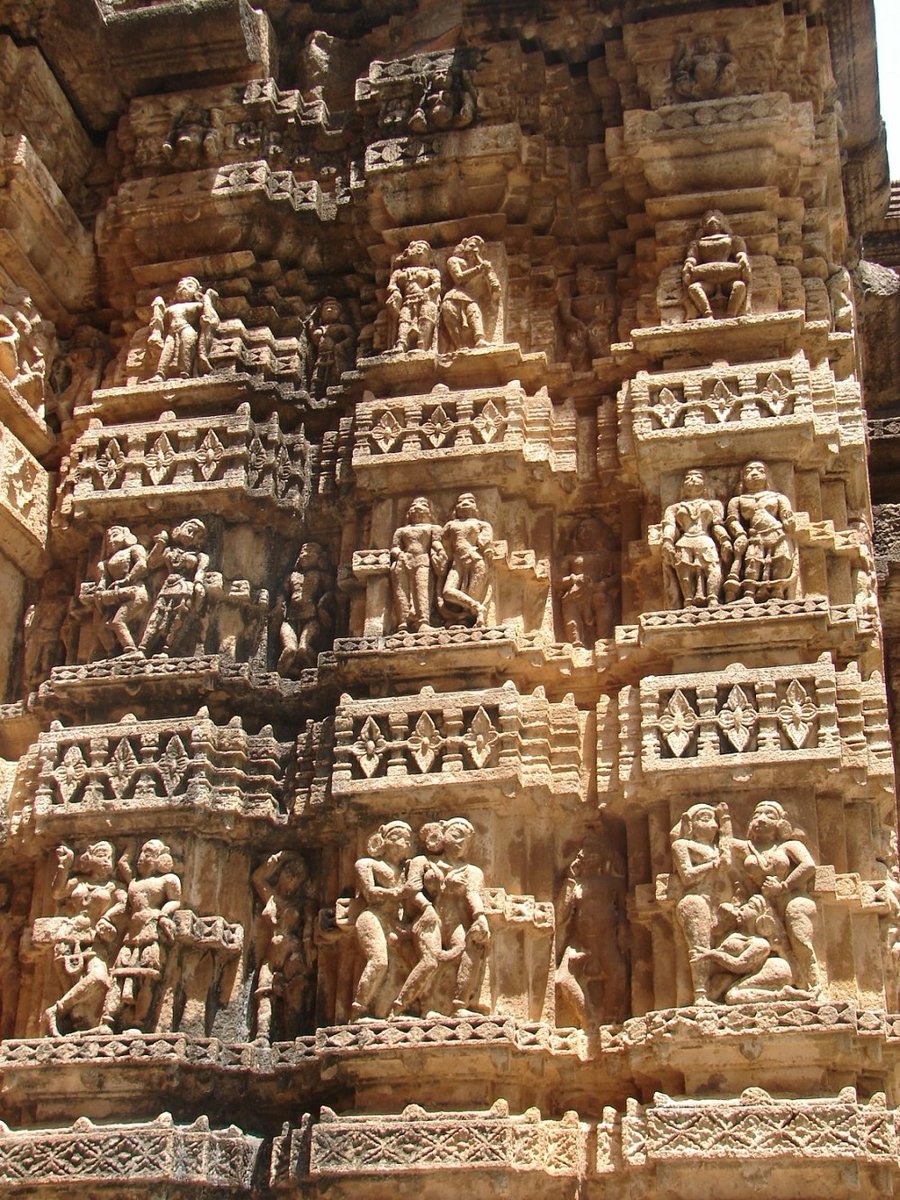
Makaras embellish the roof of the three entry porches with bands of lions and elephants on the vedibandha. The facade of the temple also portrays men and women with distinct hair styles.(11) 

In the interior of temple, the only carved portions are the slim pillars, ardhamandapa ceiling with 2 motifs flanking a 12 petalled flower motif and the doorjamb.(12) 
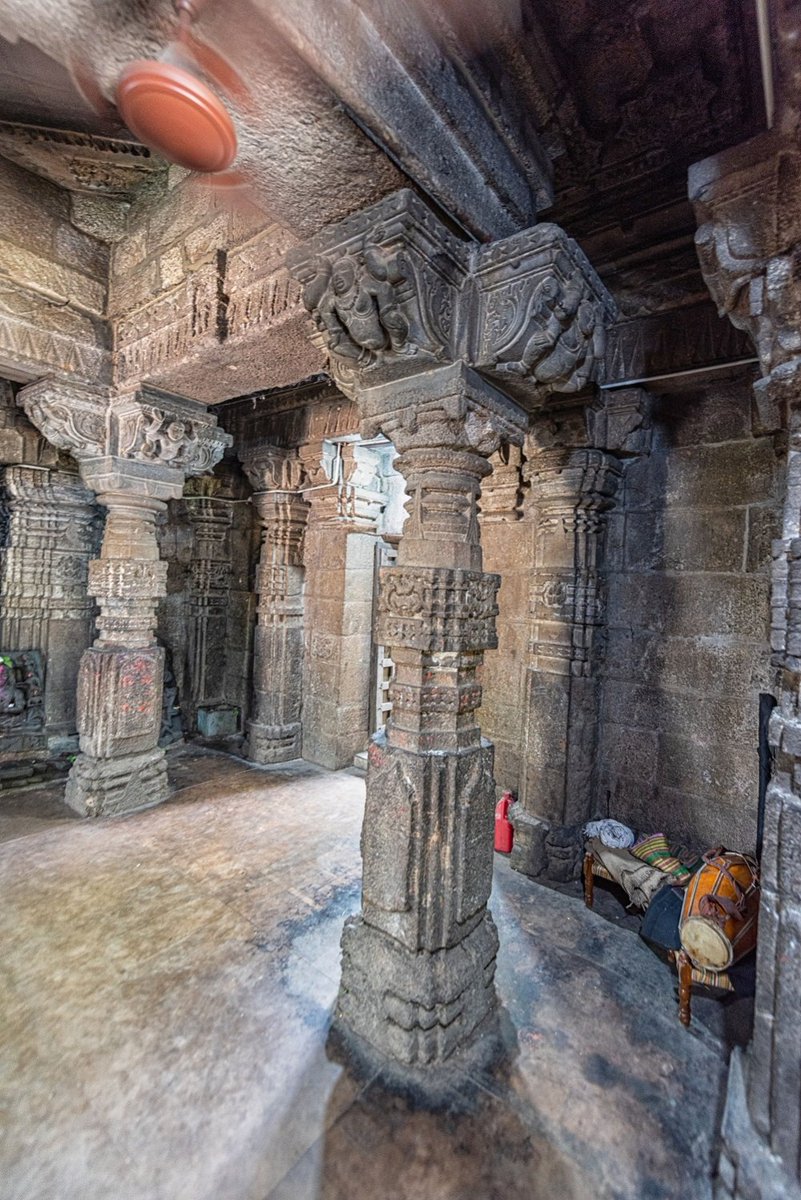
The doorway of Bhoramdeo has three jambs (shakhas). The base panels contain river goddesses and dwarpalas.(13)
The sanctum of the temple enshrines a Sivalinga which appears to have been replaced at some point. Dislodged sculptures of Naga, Ganesha and Lakulisha lie scattered around the sanctum.(14)
It is difficult to ascertain the affiliation of Bhoramdeo as the Shivalinga inside the sanctum is not original but for now one can state it's a temple dedicated to lord Shiva. Even the name Bhoramdeo is somewhat disputed regarding its reference to a particular deity.(15)
• • •
Missing some Tweet in this thread? You can try to
force a refresh

